Knowing how to transport fishing rods is essential for every angler who values gear protection and convenience. Whether you’re driving across town or flying to a remote lake, your rods face risks like bending, cracking, or getting tangled. A single misstep during transit can ruin a high-performance rod meant for precision casting. Therefore, using the right methods ensures longevity and peak performance. Moreover, proper transportation prevents damage not only to the rod but also to reels and line setups. Many anglers make the mistake of tossing rods loosely into truck beds or backseats. This often leads to snapped tips or scratched guides.
In contrast, organized systems keep everything secure and ready for action. From rod cases to roof racks, various tools exist to simplify the process. Additionally, travel regulations matter—especially when flying. Airlines have specific rules about packaging and dimensions. As a result, understanding how to transport fishing rods correctly saves time, money, and frustration. This guide covers practical strategies for cars, boats, planes, and more. Ultimately, protecting your investment starts with smart planning and the right equipment.
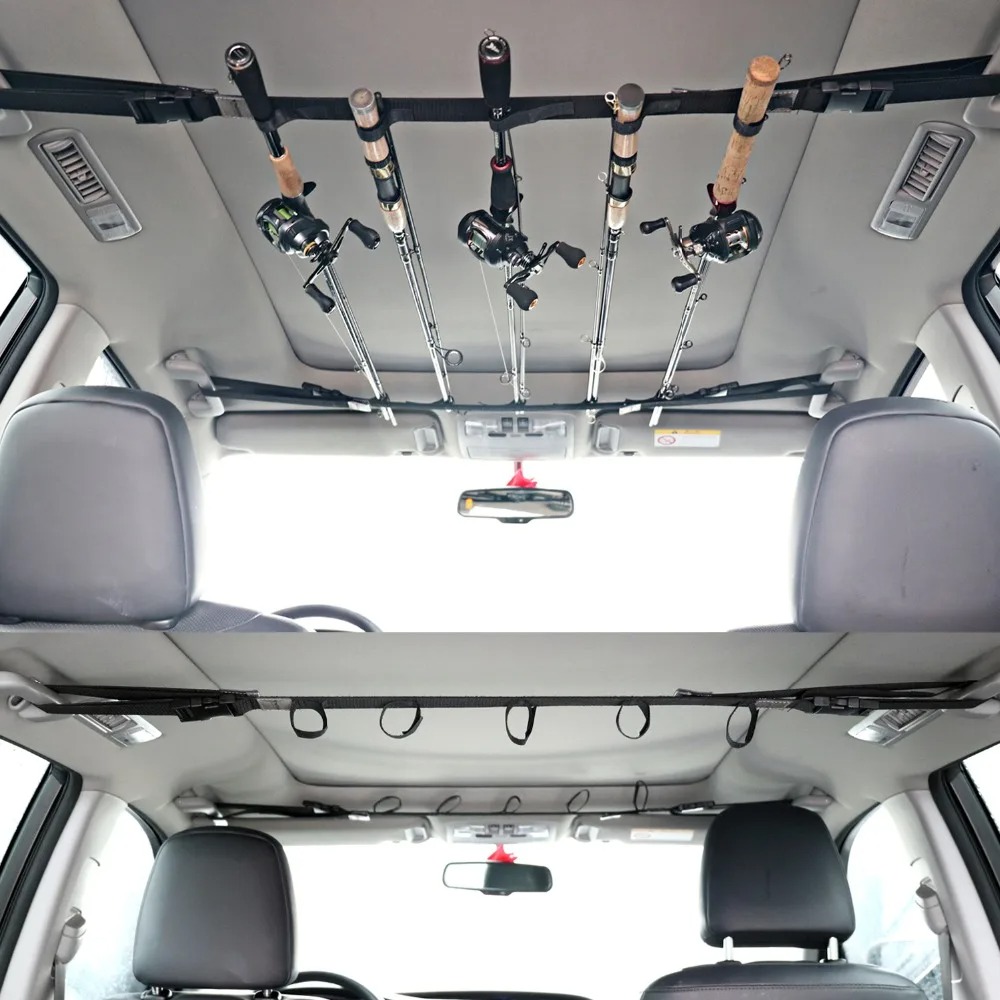 Choosing the Right Type of Rod Case for Your Needs
Choosing the Right Type of Rod Case for Your Needs
Selecting a suitable rod case is the first step in learning how to transport fishing rods safely. Hard cases offer maximum protection with rigid shells made from plastic or fiberglass. They resist crushing and are ideal for air travel or long drives. On the other hand, soft cases use padded fabric and are lighter in weight. These work well for short trips or when storage space is limited. Some models feature foam inserts that hold rods in place. Others include compartments for reels and terminal tackle. Tube-style cases are narrow and easy to store.
They fit behind car seats or in overhead bins. Meanwhile, multi-rod cases allow you to carry several at once. Anglers targeting different species appreciate this versatility. Waterproof options protect against rain and splashes on boats. Also, consider carrying handles and shoulder straps. Comfortable grips reduce strain during walks to the dock. Lockable zippers add security in public areas. UV-resistant materials prevent sun damage over time. No matter your style, choose a case that matches your fishing frequency and travel method. With the right case, you significantly improve how to transport fishing rods without risk.
Differences Between Hard Cases and Soft Cases
Hard cases and soft cases serve the same purpose but differ in function and durability. Hard cases shield rods from impact, pressure, and weather. They are best for frequent travelers or those carrying expensive gear. Most come with custom foam cutouts that cradle each rod section. This minimizes internal movement during transit. However, they are heavier and take up more space. Soft cases offer flexibility and portability. Their padded interiors cushion rods while remaining lightweight. Many fold or roll for compact storage when not in use.
Also, soft cases often cost less than hard alternatives. Yet, they provide less defense against heavy loads or accidental drops. Sharp objects can puncture fabric if not handled carefully. For everyday use, soft cases are sufficient. But for cross-country trips or flights, hard cases are safer. Some anglers own both types for different situations. Another advantage of soft cases is accessibility. Zippers open wide, allowing quick rod changes. Hard cases may require full unloading to reach one piece. Ultimately, the choice depends on your priorities. Protection favors hard cases; convenience leans toward soft ones. Both play a role in how to transport fishing rods effectively.
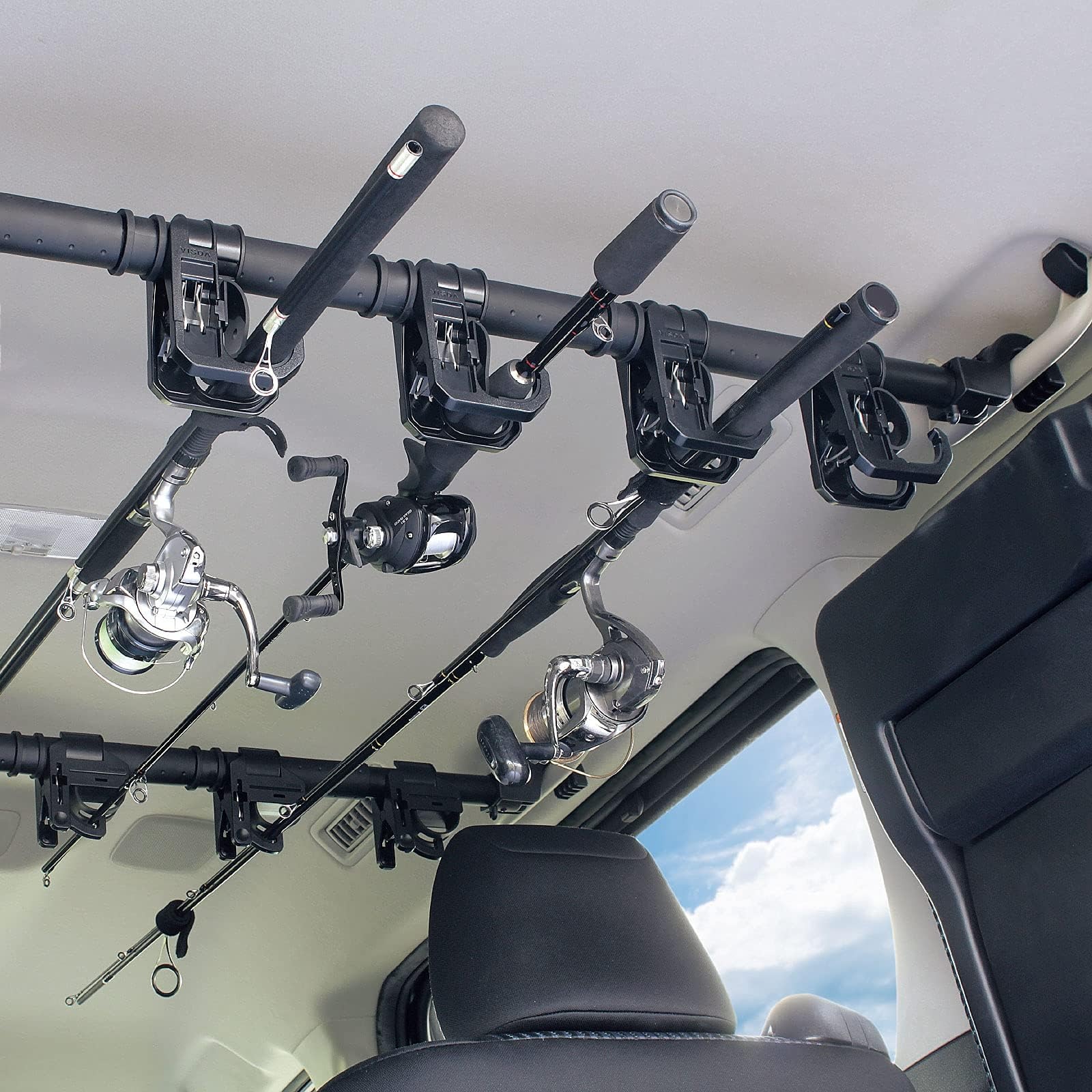 How to Pack Fishing Rods Inside a Vehicle
How to Pack Fishing Rods Inside a Vehicle
Packing fishing rods inside a vehicle requires planning and care. First, remove the reel or secure it tightly to the rod. Loose reels can shift and damage guides or get scratched. Then, place the rod in its case—either soft or hard—for added safety. If using a car, lay the case along the back seat floor. This keeps it stable and out of passenger traffic. Alternatively, fold down rear seats for longer rods. Many sedans and SUVs accommodate 7-foot rods this way. Never leave rods loose in the trunk. Bumps and turns cause them to collide with tools or luggage.
Use bungee cords or seat belts to anchor cases in place. Roof racks work for external transport. Attach rod tubes horizontally with padded mounts. Make sure they don’t extend beyond the vehicle’s width. Check local laws—some places restrict overhang. Also, cover rods with a tarp to prevent wind noise and debris damage. For hatchbacks, angle the rod diagonally from floor to ceiling. Secure both ends to avoid shifting. Always double-check stability before driving. By following these steps, you master how to transport fishing rods by car with confidence.
Securing Rods in Trucks and Pickup Beds
Trucks offer ample space but pose unique challenges for how to transport fishing rods. Laying rods flat in the bed seems easy, but vibrations and sudden stops can break them. Instead, use a bed-mounted rod holder. These clamp onto the rail and hold multiple rods vertically or diagonally. Some models rotate for easier access. Others include locking features to deter theft. Foam-lined tubes placed lengthwise in the bed also help.
Anchor them with cargo nets or ratchet straps. Avoid letting rods hang over the tailgate. Wind resistance increases, and bumping curbs becomes risky. For extended trips, install a canopy or tonneau cover. This shields rods from rain, dust, and sunlight. Also, consider temperature extremes. Hot metal beds warp rods left in direct sun. Cold weather makes graphite brittle. Store rods inside the cab whenever possible. If transporting reels separately, wrap them in cloth to prevent scratches. Finally, check your load after the first few miles. Vibrations loosen ties quickly. Taking a moment to re-secure ensures safe arrival. With proper setup, trucks become reliable platforms for rod transport.
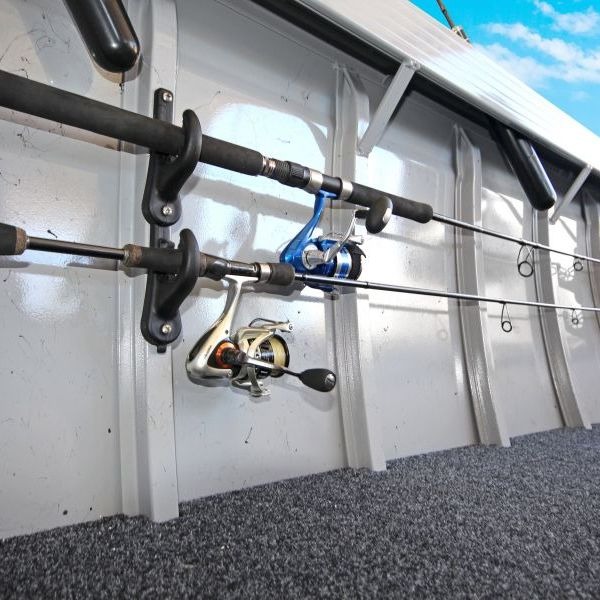 Air Travel Tips for How to Transport Fishing Rods
Air Travel Tips for How to Transport Fishing Rods
Flying with fishing rods demands extra preparation. First, check airline policies before packing. Most carriers allow rods as checked baggage. However, size limits apply—usually under 62 linear inches. Measure your case: length + width + height. Exceeding limits results in oversize fees. Use a durable hard case to pass inspection and survive baggage handling. Wrap rods in bubble wrap inside the case for added cushioning. Remove reels or secure them firmly. Detaching reduces stress on the rod seat. Label your case with name, address, and contact info.
Include a “Fragile – Fishing Equipment” tag. This alerts handlers to handle with care. Arrive early to check in directly at the counter. Avoid automated kiosks—they lack staff oversight. Request special handling if available. Some airlines offer sports equipment tags. Place rods in the middle of your luggage. Surround them with clothes for shock absorption. Never pack sharp hooks or knives in carry-ons. These trigger security issues. Declare any tools at check-in. Upon landing, retrieve your case immediately. Inspect for damage before leaving the airport. Following these guidelines improves how to transport fishing rods by plane successfully.
Protecting Reels and Accessories During Transit
Protecting reels and accessories is just as important as safeguarding rods. Reels contain delicate gears and bearings. Impacts or moisture can ruin their function. Always remove reels before packing unless securely attached. Store them in padded reel bags or protective boxes. Wrap spools in cloth to prevent line tangling. If leaving reels mounted, cap the line with tape or a rubber band. This stops unwinding during movement. Small items like lures, hooks, and pliers should go in a tackle box. Choose one with dividers and latches.
Keep it separate from rods to avoid scratching. Ziplock bags organize smaller components efficiently. Label each bag for quick identification. Desiccant packs absorb moisture in humid climates. Saltwater anglers must rinse gear after use. Dry everything completely before storage. Corrosion damages metal parts over time. Consider using anti-rust sprays on reel frames. Store all accessories in a dedicated compartment of your rod case. This centralizes your setup. By protecting every piece, you ensure full readiness upon arrival. After all, a rod is only as good as its supporting gear.
Using Roof Racks and External Mounts for Long Trips
Roof racks offer a practical solution for how to transport fishing rods on long road trips. They free up interior space and allow quick access. Begin by selecting a rack compatible with your vehicle. Crossbars are standard on most SUVs and wagons. Attach padded rod tubes using universal clamps. Position them parallel to the roofline. Center the load to maintain balance. Overhanging too far front or back creates drag and instability. Use tie-down straps with rubber guards to prevent paint scratches. Tighten them securely, but avoid excessive pressure.
Check tension every few hours during travel. Wind and vibration loosen straps gradually. Add a flag if rods extend beyond the bumper. This improves visibility for other drivers. Cover rods with a protective sleeve or tube. It reduces wind noise and protects from UV rays. Never transport rods without securing them properly. Sudden stops or gusts can launch them off the roof. Also, remove racks when not in use. They increase fuel consumption and noise. With careful setup, roof systems enhance mobility and efficiency.
Best Practices for Boat-to-Shore Transportation
Moving rods from boat to shore requires attention to detail. Wet decks and tight spaces increase the risk of damage. Start by storing rods in protective sleeves or cases before docking. Carry them one at a time to maintain control. Use a rod carrier bag with shoulder straps for multiple pieces. This keeps hands free for balance. Avoid dragging rods across rough surfaces. Lift them over gunwales instead. Rinse saltwater rods immediately after use.
Residue corrodes guides and reel seats. Use fresh water and a soft cloth. Let them dry fully before packing. On small boats, wall-mounted holders keep rods upright. These prevent tripping and reduce movement during waves. When stepping onto docks, watch for slippery spots. Hold rods near the butt end for better balance. If wading, use a chest pack with rod clips. It secures gear while keeping it accessible. Never leave rods unattended on piers. Theft and wave splash are real threats. Plan your exit route ahead of time. By adopting smart habits, you improve how to transport fishing rods between water and land safely.
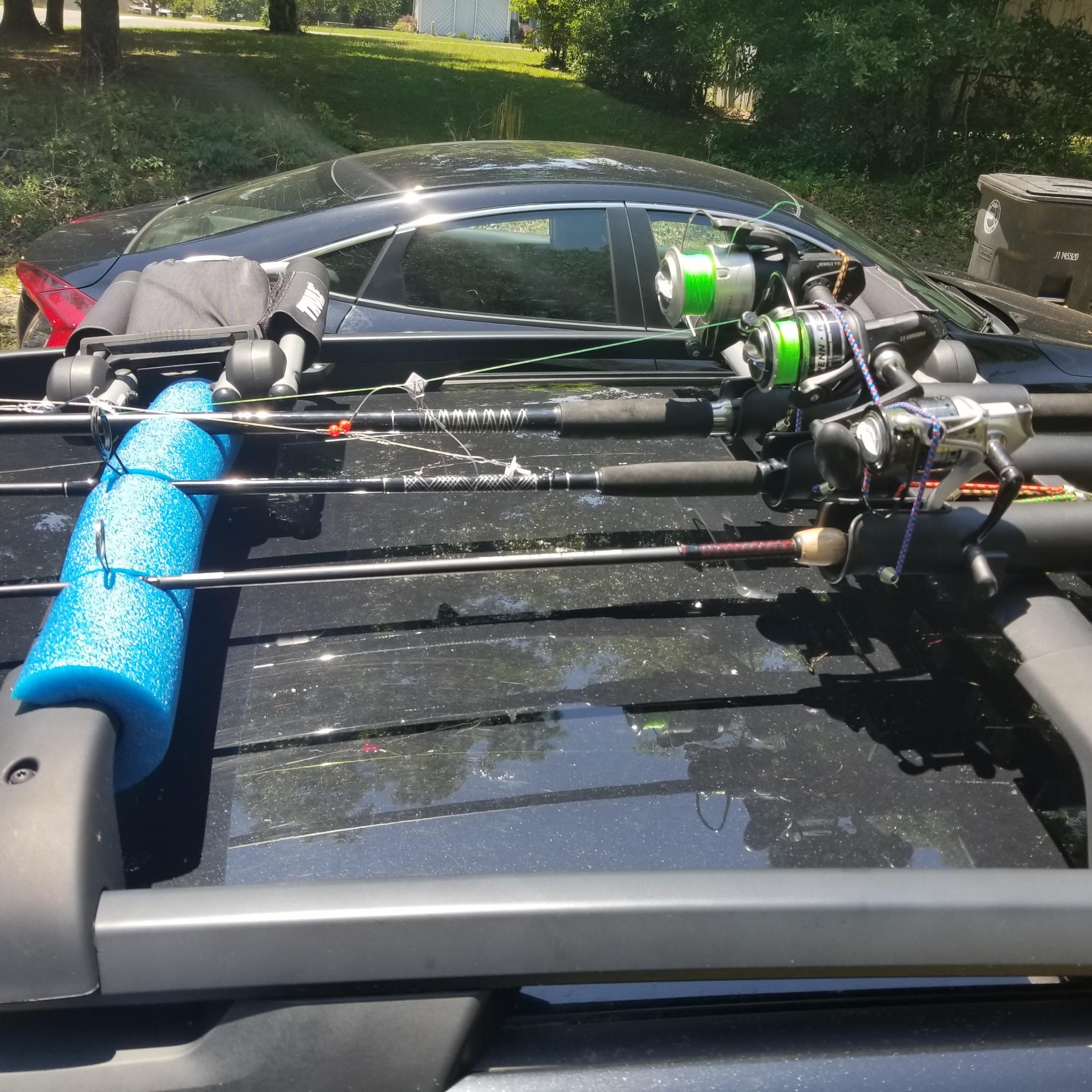 Frequently Asked Questions About Transporting Fishing Rods
Frequently Asked Questions About Transporting Fishing Rods
Can I bring fishing rods on a plane?
Yes, most airlines allow them as checked luggage. Use a hard case and follow size rules.
Do I need to remove the reel before travel?
It’s recommended. Removing reduces stress on the rod and protects the reel.
Are rod cases allowed in carry-on?
Generally no. They’re too long for overhead bins. Check them instead.
How do I stop line from tangling?
Cap the spool with tape or a rubber band. Store reels separately if possible.
Can I transport multiple rods together?
Yes, use a multi-rod case or individual tubes bundled securely.
What’s the safest way to carry rods on a roof?
Use padded mounts and tie-down straps. Ensure even weight distribution.
Should I disassemble telescopic rods?
Only if the case fits each section. Otherwise, keep them assembled with care.
Is insurance needed for valuable rods?
Consider it for high-end models. Some homeowners’ policies cover gear.
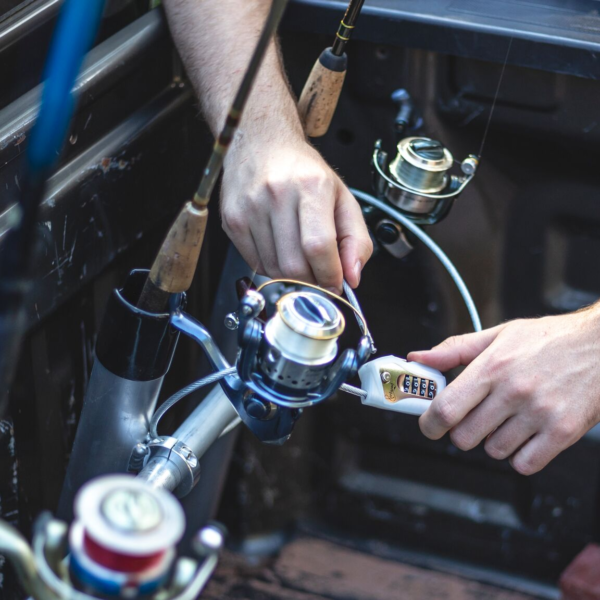 Final Thoughts on Mastering How to Transport Fishing Rods
Final Thoughts on Mastering How to Transport Fishing Rods
Learning how to transport fishing rods properly preserves your gear and enhances your experience. Whether you drive, fly, or boat, each method has best practices. Protection, organization, and awareness are key. Invest in quality cases and secure mounting systems. Prepare for weather, travel rules, and unexpected bumps. Treat your rods with the same care you give your catch. A well-maintained rod performs better and lasts longer. Most importantly, never rush the packing process. Take time to secure every component. By doing so, you ensure peace of mind on every trip. Ultimately, mastering how to transport fishing rods means fishing smarter, not harder.